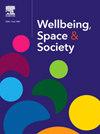Context matters: Geographic and age differences explain high heterogeneity in social isolation
IF 2.4
Q2 GEOGRAPHY
引用次数: 0
Abstract
Many studies have examined social and health-related factors associated with social isolation. However, the degree to which contextual factors and social determinants such as geography, age, and race compare against health-related factors in explaining heterogeneity in population-level social isolation is not well understood. To address this gap, we analyzed data from the largest-known dataset on social isolation (n = 73,737) from adults in central Minnesota. Linear mixed effect modeling showed that ZIP code and age significantly explain variance in isolation levels among respondents, even after controlling for individual-level factors like health. Regions with lower median incomes or higher population densities were associated with increased levels of isolation. Disparities in levels of social isolation by race and sexual orientation were also present. We conclude that social contexts may modulate the way individuals interact with others and thus modulate the prevalence of social isolation. Therefore, interventions supporting social connections must be inclusive, intersectional, and malleable to the unique communities they are built for.
许多研究都探讨了与社会隔离相关的社会和健康因素。然而,在解释人口层面社会隔离的异质性时,环境因素和社会决定因素(如地理、年龄和种族)与健康相关因素的比较程度还不是很清楚。为了填补这一空白,我们分析了明尼苏达州中部已知最大的社会隔离数据集(n = 73737)中的数据。线性混合效应模型显示,即使在控制了健康等个人层面的因素后,邮政编码和年龄仍能显著解释受访者之间的隔离水平差异。收入中位数较低或人口密度较高的地区与孤立程度增加有关。种族和性取向在社会隔离水平上也存在差异。我们的结论是,社会环境可能会调节个人与他人互动的方式,从而调节社会隔离的发生率。因此,支持社会联系的干预措施必须具有包容性、交叉性,并能适应其所针对的独特社区。
本文章由计算机程序翻译,如有差异,请以英文原文为准。
求助全文
约1分钟内获得全文
求助全文
来源期刊

Wellbeing Space and Society
Social Sciences-Social Sciences (miscellaneous)
CiteScore
2.70
自引率
0.00%
发文量
46
审稿时长
124 days
 求助内容:
求助内容: 应助结果提醒方式:
应助结果提醒方式:


